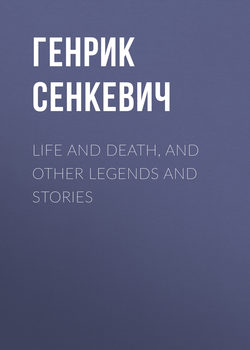Читать книгу Life and Death, and Other Legends and Stories - Генрик Сенкевич, Henryk Sienkiewicz - Страница 1
ОглавлениеPREFACE
“Is He the Dearest One?” was produced under the following circumstances: About fourteen years ago there was a famine, or at least hunger, in Silesia. Though that land is a German possession at present, it was once a part of the Polish Commonwealth, and there are many un-Germanized Poles in it yet.
The mother in this sketch is Poland. Yasko, the most unfortunate of her sons, is Silesia. Poor, ill-fated, he neglects his own language, forgets his mother; but she does not forget him, as was shown on the occasion of that hunger in Silesia. The Poles of Russian Poland collected one million marks and sent them to Yasko.
The ship “Purple” represents Poland and its career, and is a very brief summary of the essence and meaning of Polish history. Like some of the author’s most beautiful short productions, it was written for a benevolent object, all the money obtained for it being devoted to that object.
All persons who have read “Charcoal Sketches,” in Sienkiewicz’s “Hania,” will be interested to learn the origin of that striking production. It was written mainly and finished in Los Angeles, Cal., as Sienkiewicz told me in Switzerland six years ago, but it was begun at Anaheim Landing, as is described in the sketch printed in this volume, “The Cranes.” Besides being begun at Anaheim Landing, the whole plan of “Charcoal Sketches” was worked out there. “The Cranes” appeared in Lvov, or Lemburg, a few years ago, in a paper which was published for one day only, and was made up of contributions from Polish authors who gave these contributions for a benevolent purpose. The Hindu legend, “Life and Death,” to be read by Sienkiewicz at Warsaw in January, is his latest work.
JEREMIAH CURTIN.
Torbole, Lago di Garda, Austria,
December 18, 1903.
